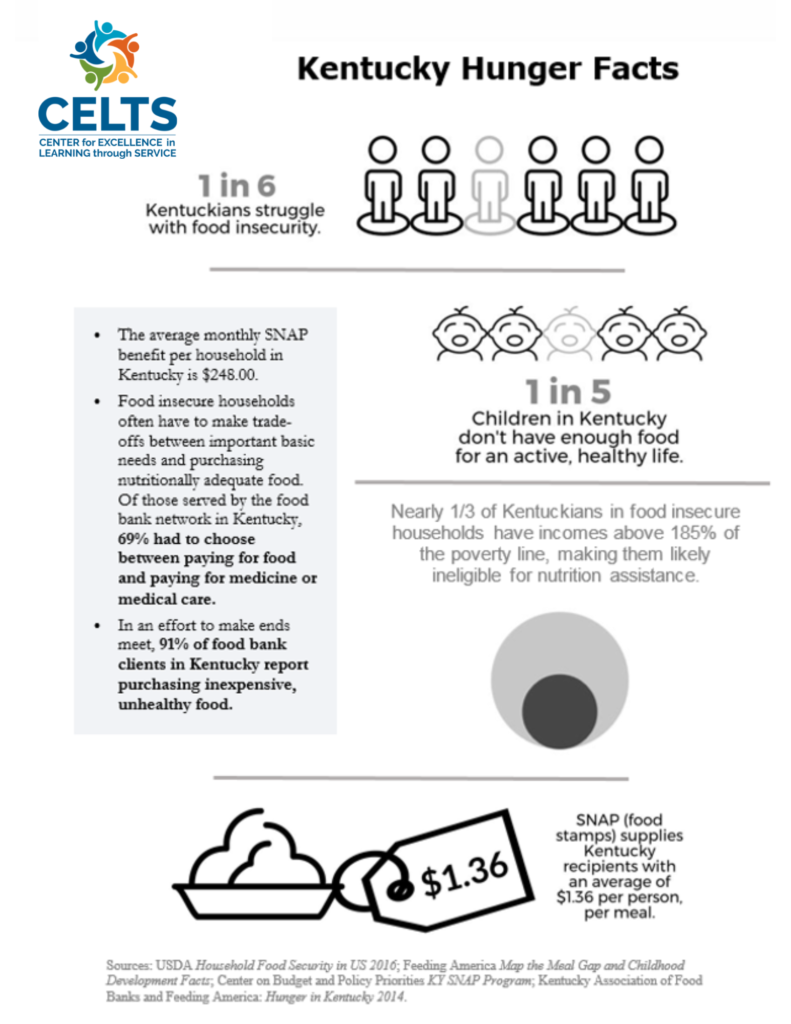Events
We sponsor two events here at CELTS to help address hunger in our community:
- Better Together 5K (Fall Term) Site under construction. Check back later.
- Empty Bowls Project (Spring Term)
What Causes Hunger?
According to Bread for the World there are many reasons why hunger exists in our world. Here are just a few listed on their website:
- Not enough jobs.
- Low wages; insufficient salaries to lift those affected out of poverty.
- 23 percent of the world’s population possesses 85 percent of the world’s wealth.
- Little to no access to education.
- Unfair treatment of women.
- Famine and disasters.
- Unfair laws.

World and Domestic Hunger Statistics
- “After steadily declining for a decade, world hunger is on the rise, affection 8.9% of people globally. From 2018 to 2019, the number of undernourished people grew by 10 million, and there are nearly 60 million more undernourished people now than in 2014.”1
- “In 2019, 89.5percent of U.S. households were food secure, meaning they had access at all times to enough food for an active, healthy life for all household members. Th remaining households (10.5 percent) were food insecure at least some time during the year, including 4.1 percent that experienced very low food security.”2
- “The Supplemental Nutrition Assistance Program (SNAP) accounted for 65 percent of all Federal food and nutrition assistance spending in FY 2019. On average, 6.4 million people per month participated in the Special Supplemental Nutrition Program for Women, Infants, and Children (WIC) in FY 2019, 7 percent fewer than in the previous fiscal year.” 3
Local Statistics
- “New data released by the U.S Census Bureau reveal that 247,780 Kentucky children still live in poverty. The American Community Survey one-year estimates show 25 percent of Kentucky children lived in poverty in 2016, which was not a significant change from the 2015 estimate. This estimate reveals that the percent of Kentucky children living in poverty remains higher since the Great Recession began in 2008 (23.5 percent). The data places Kentucky with the 4th highest rates of child poverty and overall poverty among states.”4
- In 2014, the number of Madison County children living in high poverty areas was 46%. In 2011-’12, 56 percent of children in Madison County school district qualified for free or reduced lunch and 59 percent of Berea Independent students qualified. 5
Footnotes
1 Action Against Hunger, 15 July 2020. “World Hunger: Kay Facts and Statistics 2020”, https://www.actionagainsthunger.org
2 USDA ERS – Charts of Note. “ERS Charts of Note”, https://www.ers.usda.gov
3 USDA ERS. “The Food Assistance Landscape: Fiscal Year 2019 Annual Report.” https://www.ers.usda.gov
